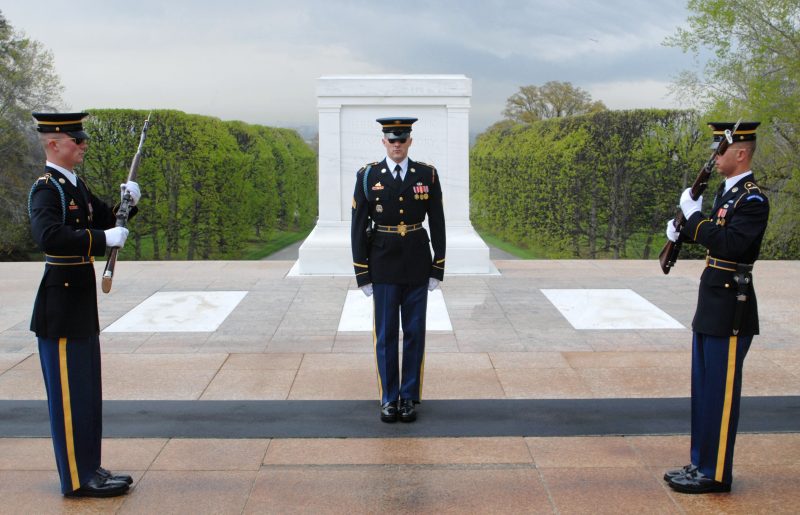Many nations have special monuments to soldiers who fell in battle and whose bodies have never been recovered or identified.
The United Kingdom has the Tomb of the Unknown Warrior in Westminster Abbey. Russia has the Tomb of the Unknown Soldier in the Alexander Garden in Moscow. Germany has the Unter den Linden in Berlin.
The United States has the Tomb of the Unknown Soldier at Arlington Cemetery in Washington, D.C. It is positioned on the top of a hill overlooking the United States capital.
The United States Congress legislated for the burial of an unidentified soldier on March 4, 1921. This soldier had perished during World War I.
The tomb, in the plaza of the Memorial Amphitheatre, was guarded by three statues representing Peace, Victory and Valour. Six wreaths sculpted on the sides of the tomb represented the six major campaigns of World War I in which the Americans were engaged.
A veteran, Sergeant Edward F. Younger, chose the soldier to be entombed by placing white roses on one of four caskets. The remaining three were buried at Meuse-Argonne Cemetery in France.
The Unknown Soldier lay under the rotunda of the Capitol Building in Washington, D.C until Armistice Day, November 11, in 1921. On that day it was solemnly interred at Arlington Cemetery by President Warren G Harding.
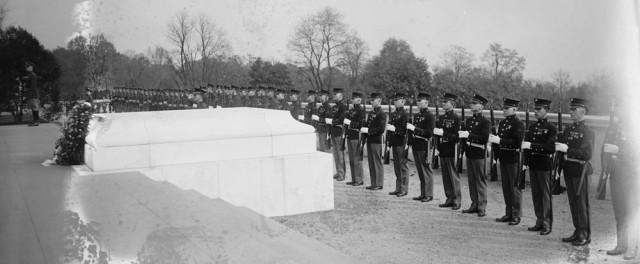
In 1921 there were no guards posted at the time and members of the public could approach the tomb. Many picnicked in the area. The first guard, a civilian, was posted in 1925 to preserve the dignity of the tomb.
The following year a military guard replaced him during daylight hours. On July 1, 1937, military guards were posted for the entire 24 hour period.
The first military guards were drawn from the 3rd Cavalry Regiment. Since April 6, 1948, the tomb has been guarded by the 3rd Infantry Regiment, known as the Old Guard.
Guarding the Tomb of the Unknown Soldier has become an elaborate ceremony. The guard wears a special uniform.
The guard walks a black mat before the tomb. He wears no insignia, so as not to outrank the entombed soldier. Non-commissioned officers do display their rank but only when changing the Guard.
The guard takes exactly twenty-one steps, representing the twenty-one gun salute the highest honor that can be given to a person by the United States.
The guard does not complete an about-face when reaching the end of the mat, so as not to turn his back on the tomb. Instead, he turns and faces the tomb for twenty-one seconds.
He then faces the opposite end of the mat and changes his weapon to his outside shoulder. This gesture is a symbol of protecting the tomb.
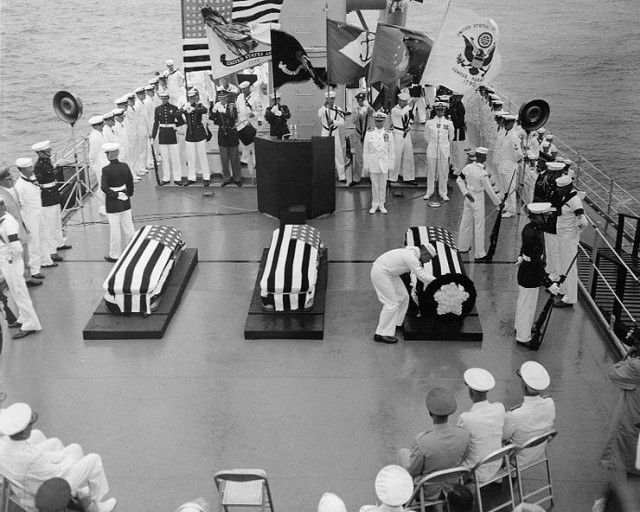
The guards do not perform merely ceremonial duties. If visitors are too loud or otherwise disrespectful, the soldier will confront them.
In summer the guard is changed every thirty minutes. In winter it is changed every hour. When the cemetery is closed, the Changing of the Guard occurs every two hours.
The selection of guards is subject to a series of rigorous tests. The honor of wearing the TGIB (Tomb Guard Identification Badge) is permanently granted to a soldier who has served as a guard for nine months.
Over 600 have been granted the badge since its inception in the late 1950s. The TGIB can only be lost by an offense that brings dishonor to the Tomb of the Unknown and is worn on the right pocket of the jacket.
Female soldiers may wear the TGIB, but so far, only three have received it.
The soles and heels of the shoes worn by the guards are equal in height. This allows the soldier to march with a perfectly straight back. He appears to walk smoothly rather than march.
A shank of steel, the ‘clicker’, is attached to the inside of each heel. This allows heel clicks when certain movements are done.
Occasionally the Changing of the Guard occurs without voice commands, as a sign of respect to the Unknown Soldier. Instead, the heel clicks are the signals co-coordinating the change.
The constant marching wears down the mat, so it is replaced twice a year – before Memorial Day and before Veterans Day.
The weapons the Tomb Guards bare have changed over the years. Currently, they carry M14 rifles with bayonets fixed.
They are fixed to ceremonial rifle stocks handmade by Tomb Guards.
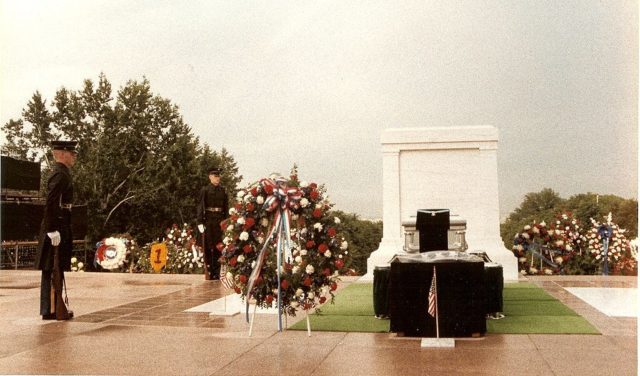
In 1958 the U.S. Armed Forces began interring Unknown Soldiers from the Second World War and Korean War.
Remains were selected from Europe, Africa, Hawaii and the Philippines. The USS Canberra, a guided missile cruiser took the remains on board.
Navy Hospitalman Class William R. Charette, then the Navy’s only active-duty Medal of Honour recipient, chose the Unknown Soldier representing the unknown dead of World War II.
From the Korean War Army Master Sgt. Ned Lyle chose the Unknown Soldier. President Eisenhower bestowed the Medal of Honor on this and three other unknowns, before interring them at Arlington.
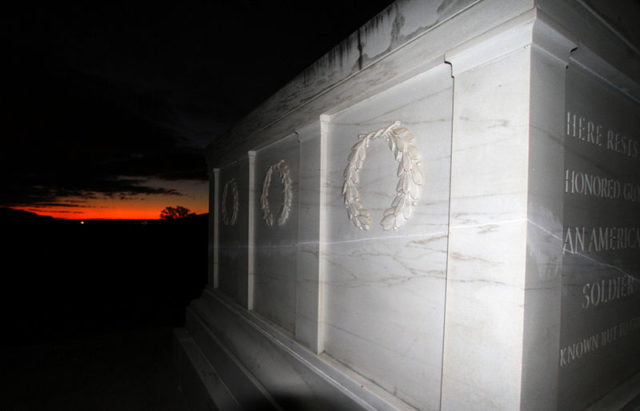
On May 17, 1984, US Marine Corps Sgt. Maj. Allan Jay Kellogg, a Medal of Honor recipient, selected the Unknown Soldier from the Vietnam War.
The ceremony took place at Pearl Harbour, Hawaii. The remains were taken to the Capitol on Memorial Day, May 28. From there they were transferred to the Memorial Amphitheatre at Arlington.
On May 14, 1998, the soldier was exhumed and subjected to DNA testing. It was discovered that the remains were of Air Force 1st Lt. Michael Joseph Blassie. He had been shot down near An Loc, Vietnam in 1972.
His tomb has remained vacant since, and was inscribed with the words ‘Honoring and Keeping Faith with America’s Missing Servicemen, 1958-1975.’
Video
Changing of the Guard, Tomb of the Unknown Soldier, Arlington
